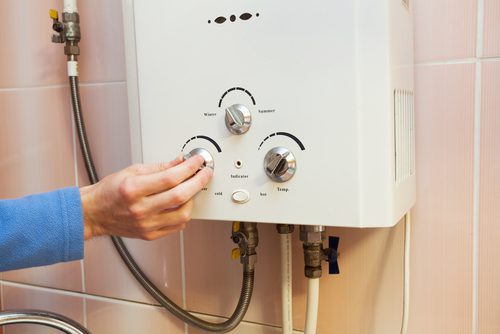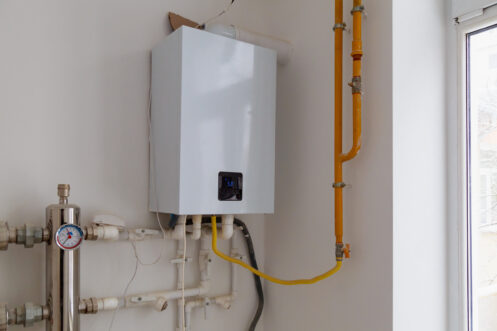How to Care for Your Home's Hot Water System EffectivelyEffective Methods to Care for Your Home's Hot Water System Effectively
How to Care for Your Home's Hot Water System EffectivelyEffective Methods to Care for Your Home's Hot Water System Effectively
Blog Article
Just how do you really feel when it comes to How to Maintain Your Water Heater & Prolong its Life?

Warm water is important for daily convenience, whether it's for a revitalizing shower or washing dishes. To guarantee your warm water system runs effectively and lasts longer, normal upkeep is vital. This write-up offers functional ideas and insights on exactly how to keep your home's warm water system to avoid disturbances and pricey repair work.
Intro
Preserving your home's warm water system could seem daunting, yet with a couple of easy actions, you can ensure it operates efficiently for years ahead. This guide covers every little thing from comprehending your hot water system to do it yourself maintenance suggestions and recognizing when to hire professional assistance.
Relevance of Preserving Your Hot Water System
Regular maintenance not just prolongs the life expectancy of your warm water system but likewise ensures it runs effectively. Ignoring maintenance can result in reduced efficiency, higher energy costs, and even premature failure of the system.
Indications Your Hot Water System Needs Maintenance
Recognizing when your warm water system needs interest can stop significant concerns. Look out for signs such as inconsistent water temperature, unusual noises from the heater, or corroded water.
Understanding Your Warm Water System
Prior to diving right into upkeep jobs, it's practical to understand the fundamental elements of your hot water system. Normally, this consists of the hot water heater itself, pipelines, anode poles, and temperature controls.
Regular Monthly Maintenance Tasks
Regular monthly checks can help catch minor concerns prior to they rise.
Flushing the Water Heater
Purging your hot water heater gets rid of sediment accumulation, enhancing effectiveness and lengthening its life.
Checking and Replacing Anode Rods
Anode rods stop deterioration inside the tank. Inspecting and replacing them when worn is important.
Examining and Changing Temperature Level Setups
Readjusting the temperature setups ensures ideal performance and safety and security.
DIY Tips for Maintenance
You can do several maintenance jobs yourself to maintain your warm water system in leading condition.
Checking for Leaks
Regularly check pipelines and connections for leakages, as these can lead to water damage and greater costs.
Examining Stress Relief Valves
Checking the stress relief valve guarantees it operates properly and protects against excessive pressure accumulation.
Protecting Pipes
Protecting hot water pipelines reduces warmth loss and can conserve energy.
When to Call an Expert
While DIY upkeep is useful, some concerns need specialist know-how.
Complex Concerns Needing Specialist Assistance
Instances consist of major leakages, electrical issues, or if your water heater is constantly underperforming.
Routine Specialist Maintenance Advantages
Specialist upkeep can include detailed evaluations, tune-ups, and making certain compliance with safety and security standards.
Verdict
Normal maintenance of your home's warm water system is essential for effectiveness, durability, and price savings. By adhering to these suggestions and knowing when to seek expert aid, you can guarantee a reputable supply of warm water without unanticipated disruptions.
Water Heater Maintenance: The Basics
Maintaining your water heater will ensure it operates efficiently and has a longer lifespan. Neglecting regular maintenance can lead to costly repairs and an even bigger chunk of your savings if you have to replace it sooner than necessary. But there’s good news: Most water heater maintenance tasks are relatively simple and easy for homeowners with basic DIY skills.
Flush the Water Heater
Over time, sediment and minerals can build up in the tank, reducing its efficiency and potentially causing damage. To flush the tank, turn off the power or gas supply, attach a hose to the drain valve near the bottom and open the valve to drain the water until it runs clear. Ideally, flush the tank annually.
Replace the Anode Rod
The anode rod is a sacrificial metal rod that helps prevent corrosion inside the tank. Inspect and replace it every three to five years or per the manufacturer's recommendation. To replace the anode rod, turn off the power or gas supply, drain a few gallons of water from the tank, unscrew the old rod and replace it with a new one. If the anode rod is significantly corroded or covered in calcium buildup, it's a sign the water heater may need to be replaced soon.
Tune-Up
A yearly tune-up can help identify potential issues and ensure your water heater operates at peak efficiency. This typically involves checking the thermostat, burner assembly (for gas heaters) and any other components specified by the manufacturer. During a tune-up, the technician may also clean the burner and adjust the pilot light (for gas heaters) or examine the heating elements (for electric heaters).
How to Maintain Your Water Heater
Insulate the tank. Insulating the tank can improve energy efficiency and reduce heat loss, saving you money on energy bills. You can purchase precut insulation blankets designed specifically for water heaters or use standard fiberglass insulation wrapped securely around the tank. Check the temperature. The recommended water temperature for most households is around 120 degrees Fahrenheit (49 degrees Celsius). Higher temperatures can increase energy costs and potentially cause scalding. Use a kitchen thermometer to check the temperature at the faucet nearest the water heater. Monitor water pressure. Excessive water pressure can strain the water heater and cause leaks or even tank failure. Install a pressure-reducing valve if necessary. The ideal water pressure range is between 60 and 70 PSI (pounds per square inch). Test the temperature and pressure (T&P) relief valve. The T&P relief valve is a safety feature that releases pressure if the tank gets too hot or the pressure builds up too high. Test it annually by lifting the lever and allowing a small amount of water to release. Replace the valve if it doesn't release water or reseal properly. Check for leaks. Regularly inspect the tank, pipes and fittings for leaks or corrosion. Deal with issues promptly to prevent further damage. Even a small leak can lead to significant water damage over time. Consider a tankless water heater. If your traditional tank-style water heater is nearing the end of its lifespan ( typically 10 years), consider replacing it with a tankless water heater. These units heat water on demand, reducing standby energy losses and potentially saving you money on your energy bills. Schedule professional maintenance. While homeowners can perform many water heater maintenance tasks, it's still a good idea to schedule professional maintenance every few years. A plumber or HVAC technician can thoroughly inspect the unit, identify potential issues and ensure it operates safely and efficiently. https://www.homeserve.com/en-us/blog/home-improvement/hot-water-heater-maintanence/

We were shown that write-up on Water Heater Maintenance Tips You Can't Afford to Forget through an associate on another blog. So long as you appreciated our blog posting please do not forget to share it. Thanks a bunch for your time. Come back soon.
Click Here Report this page